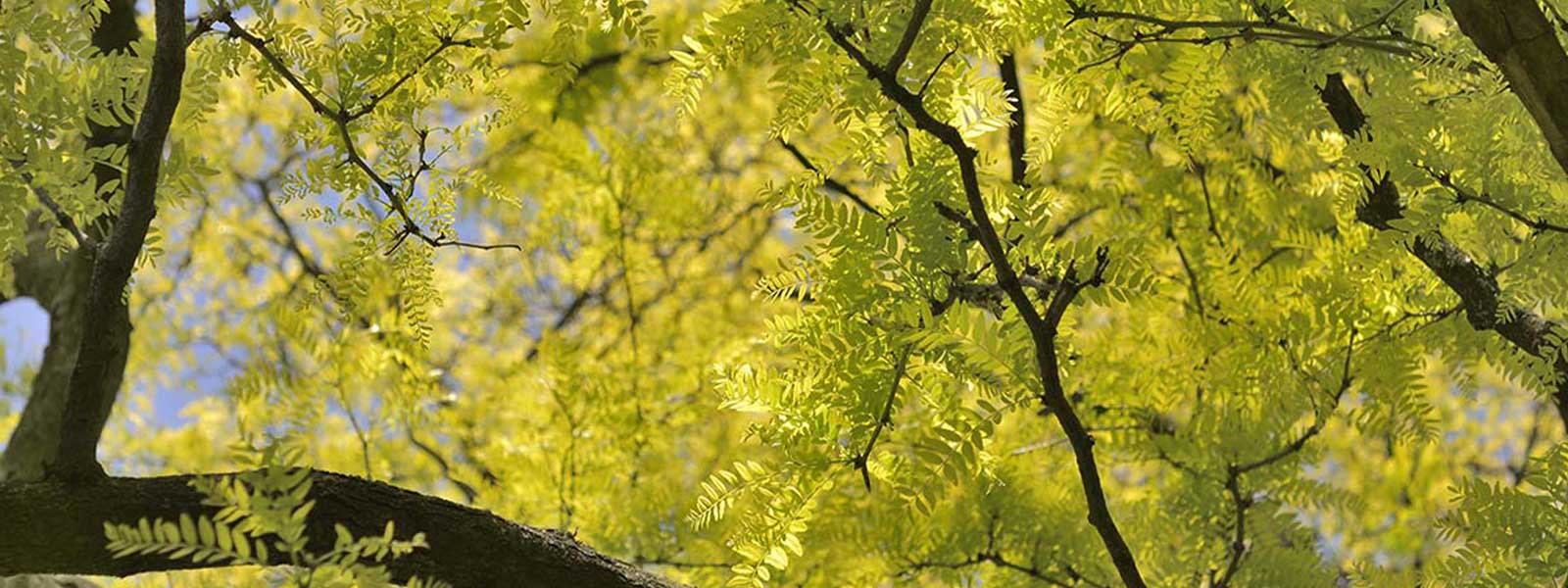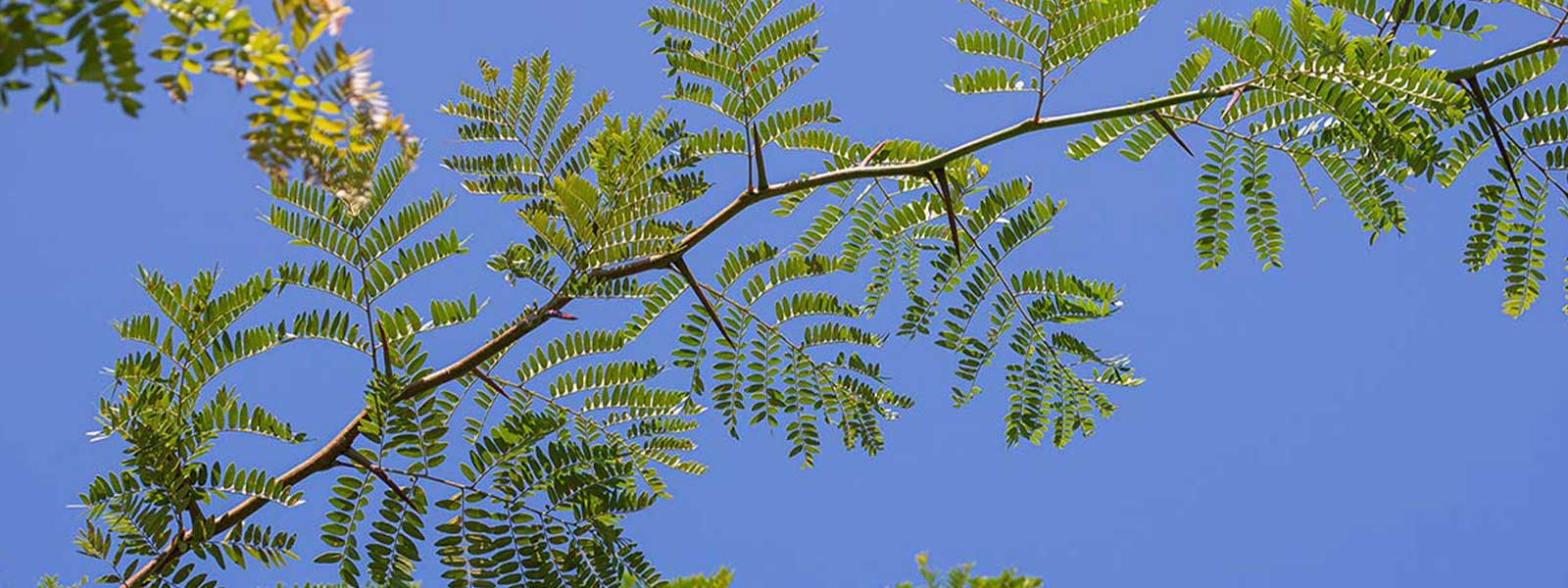Fall ’25 Bare-Roots – Order Now
Fall ’25 Bare-Roots – Order Now
|
Honey locust are ideal silvopasture trees that can transform open farmland or degraded woodlands into prime pasture for livestock, while also enhancing the biodiversity and resilience of working lands. In a time of impending climate change, trees are powerful and accessible tools for pulling carbon out of the atmosphere and enhancing the resilience and productivity of our farmland. Open pastures used for raising livestock occupy large amounts of land. Incorporating trees into pastures and introducing livestock to wooded areas – a practice called silvopasture – not only benefits the planet, but also benefits livestock and the land where they’re raised.

A typical pasture is a homogenous landscape; a field of grasses and clovers enclosed in a fence where animals graze and are exposed to the elements. In the peak of summer, livestock have no reprieve from the hot, beating sun. This is very stressful and uncomfortable for the animals as their bodies work continuously to regulate internal temperature. Honey locust trees provide just the right amount of shade to protect livestock from the intense summer sun, yet enough exposure to allow the forage to grow between the trees. This means livestock are more content and can spend their energy eating and building biomass rather than struggling to stay cool.
But, that’s not all – honey locust also leafs-out later in the spring than other trees, allowing for the early season grass to grow with little shade under the canopy. Throughout the summer, honey locust provides a dappled shade, allowing grasses to continue growing. The partial shade also slows down grasses from going to seed, providing higher quality forage for a longer period of time. And when the leaves drop in early fall, they are so small they don’t smother the forage.
Research has shown that silvopasture can actually produce the same amount of forage as pasture or more, all while building soil, sequestering more carbon, and improving conditions for livestock. In times of drought, the grass will be greener and longer under the canopy. There are few trees better suited for livestock than honey locust.

Honey locust pods are a familiar sight to many people. It is a common street tree, planted primarily in suburban and urban areas. The consensus is that these pods are messy and a nuisance. However, these pods hold a powerful secret that we can’t afford to overlook. Inside the pod there is an edible bright green flesh that is as sweet as candy. It makes a delicious snack and can be processed into a sweetener. Imagine growing sugar on trees! Within the pods there are also protein packed seeds that can be consumed by livestock and wild animals.
It is important to note that not all honey locusts are created equal. There have been some small but vital breeding efforts done in the past that have provided local enthusiasts with selections such as Hershey, Calhoun, Ashworth, and Millwood. The pods from these trees are plump and much more usable by people and animals. For example, varieties such as Millwood produce pods that are more digestible, higher in sugar and protein, and more productive than your average honey locust tree. Adding these productive varieties into a silvopasture system could yield just as many calories, if not more, from the pods than from a field of hay. There is also the added benefit that the pods tend to drop over the course of months, providing supplemental forage from late summer to mid winter. Combined with the lush forage growing between the trees, the potential of honey locust becomes apparent. With the minimal breeding work that has been done, we are just beginning to unlock its full potential.

Honey locust is part of the Phabacea family, otherwise known as the pea family. Many plants in the pea family can fix nitrogen from the atmosphere through rhizobia bacteria in nodules, which are attached to the roots of a pea plant. Although honey locust lacks nodules on its roots, there is evidence to support that rhizobia bacteria exist within the roots themselves. Furthermore, research shows that the soil around honey locusts is significantly higher in nutrients and quality compared to soil in conventional pasture and surrounding other tree species. Improved soil quality means better forage, in addition to the added benefits of erosion control, water retention, and carbon sequestration that comes with planting any tree.
Plant honey locust trees and create a purposeful pasture for your livestock. Go beyond accepting the state of your forage and make an investment that will benefit your livestock and your land for generations to come.
For additional information, check out these great reference books:
Tree Crops by J. Russel Smith
Trees of Power by Akiva Silver